 |
|
BTCEB's January Buzz . . .
|
|
|
Club Elections Nearing, Call for Candidates
by BTCEB Nominations Committee 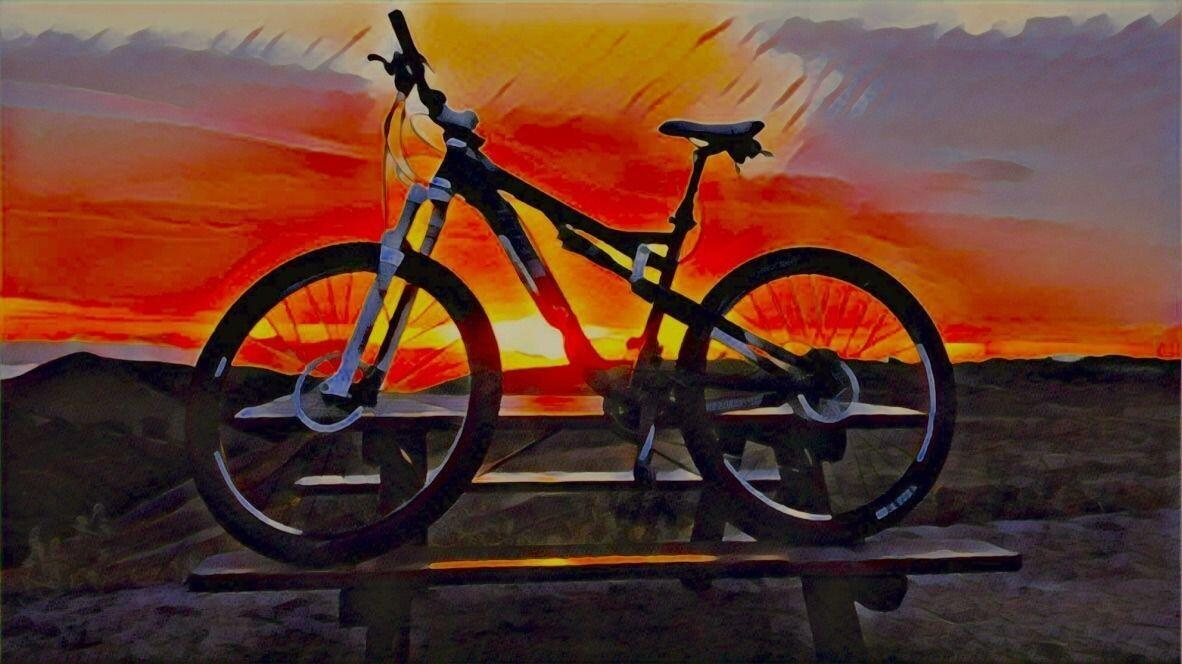
Are you passionate about mountain biking? Would you like to be part of advocacy, trail work, and expanding access for mountain bikers in the East Bay? We may have the right job for you! The Bicycle Trails Council of the East Bay (BTCEB) will be holding elections for several Board of Director
positions at our February 2021 meeting. We encourage all interested members to consider applying for one of our openings.
BTCEB is a 501(c)(3) non-profit organization that was founded in 1987 by a dedicated group of volunteers who successfully fought the planned closure of almost all bike trails in the East Bay! We are the oldest mountain bike advocacy group in the United States and one of the founding clubs of IMBA.
Our mission is to educate cyclists in responsible mountain biking, to advocate for appropriate access and to promote community among trail users so all may fully enjoy and preserve the natural spaces of the East Bay.
Applicants for board positions must be current dues-paying BTCEB members (you may join now if your membership is not current). Terms of office will be two years and you will be expected to attend our monthly board meetings currently held via teleconference. There will also be opportunities to contribute to our rides and education programs, advocate for increased access to singletrack, and develop and maintain trails in East Bay parks.
Our top priorities for the next year currently include:
- Keeping Joaquin Miller Park awesome
- Working to expand and maintain the Oakland Pump Track
- Working with EBRPD to develop a plan to build new singletrack connecting Sibley Regional Park with Moraga
- Continuing the maintenance and development of the trail system at Crockett Hills Regional Park
- Working with the Walnut Creek Open Space District on singletrack in Lime Ridge and Shell Ridge
- Developing closer relationships with East Bay youth and high school mountain biking teams
If you would like to be a part of the movement to free the singletrack, please contact us and let us know of your interest by completing this Google Form by Sunday, January 31st. You should be prepared to attend a meeting by teleconference on Wednesday, February 3rd 7:00-9:00 PM to introduce yourself and talk about why you’d like to participate in the Bicycle Trails Council Board of Directors.
Elections will be held for the following officer positions:
President
The President presides at all meetings of the Board of Directors, He or she shall generally supervise, direct, and control the business and officers of the corporation. He or she leads the Executive Committee, provides support for all other BTCEB committees, and participates in those committees as needed.
Incumbent: Jerott King
Vice-President
The Vice-President performs the duties of the President in the absence or disability of the President and also acts in a leadership role for the organization. He or she participates in the BTCEB Executive committee.
Incumbent: (vacant)
Secretary
The Secretary creates and maintains all official records of the BTCEB, including the Book of Minutes, the Annual Report, and any Notices required for BTCEB business.
Incumbent: Tom Holub
Membership Director
The Membership Director seeks to recruit and retain dues-paying BTCEB members, through communications, group activities, and promotions. He or she is responsible for maintaining membership through a platform such as MemberPlanet and BTCEB promotions such as the Columbia Employee Store discount program.
Incumbent: Yvette Skinner
Community Outreach Director
The Community Outreach Director seeks to promote mountain biking among new and interested parties, and manages BTCEB’s ride and education programs. He or she also leads outreach efforts to underrepresented communities, youth, women, and LGBTQ populations.
Incumbent: Ben Brunetti
Trails Director
The Trail Director is responsible for guiding the organization’s efforts in trail development, trail maintenance and the management of volunteers for trail work for the MTB trail systems in the East Bay. He or she will attempt to address reports of trail damage by organizing trail work days. The Trail Director is in contact with the land managers responsible for our parks. He or she communicates and coordinates with the land managers to help maintain the trails and report to the land managers BTCEB’s efforts in trail maintenance and problems addressed.
Incumbent: (vacant)
Advocacy Director
The Advocacy Director works with local and regional land managers and with other bike advocacy organizations to advocate for and manage mountain bike access. The Director may encourage advocacy by managing teams or advocates associated with particular parks or geographic areas. Making connections to and garnering support of other organizations that share BTCEB’s goals is an important aspect of this position.
Incumbent: (Austin McInerny)
Board Member At-Large
Contributors who do not hold one of the officer positions may also participate in the BTCEB board with full voting rights and will contribute to the committees they are assigned.
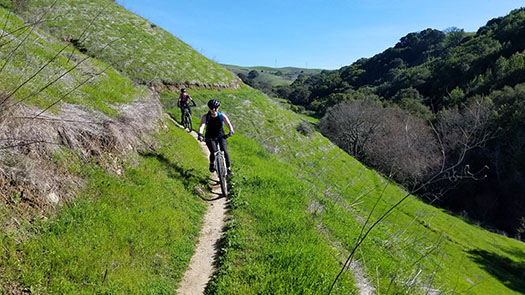
Please keep in mind however that the full extent of each position’s duties will be determined primarily by the person filling the role. We are looking for self-motivated, creative individuals who have fresh ideas about what mountain biking in the East Bay could be.
Interested in more than one position? No problem – you can apply for more than one! Want more information about a position? Shoot us an email at nominations@btceb.org.
Interested in becoming more involved but not at the board level? Please email us with your area of interest or questions also to nominations@btceb.org and we’ll get you in contact with the right board member to see how we can make that happen. Virtual Gala Rides Continue!
By Scott Bartlebaugh and Jamuel Starkey
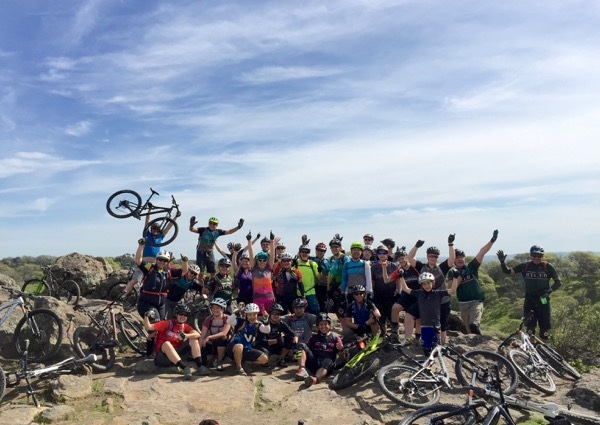 BTCEB's A Separately Together Gala Ride series continues in January at Fernandez Ranch (virtually of course). They way it works is we'll provide three curated rides with increasing difficulty similar to our regular Gala rides (A, B, and C hardest to easiest).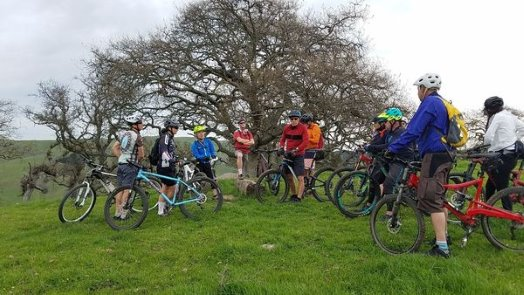 Situated just next door to Crockett Hills, Fernandez Ranch offers great views, single track, low technicality but comparatively fewer and less steep climbs. Yay!The best way to participate in this month's ride is head over to the BTCEB Strava Club. If you are not yet a member of our Strava club, please give us a day or so to approve you. Membership in the BTCEB Strava Club is open to the public. Situated just next door to Crockett Hills, Fernandez Ranch offers great views, single track, low technicality but comparatively fewer and less steep climbs. Yay!The best way to participate in this month's ride is head over to the BTCEB Strava Club. If you are not yet a member of our Strava club, please give us a day or so to approve you. Membership in the BTCEB Strava Club is open to the public.
If you are new or if you haven't done it already, please allow us to track your progress on your upcoming rides:
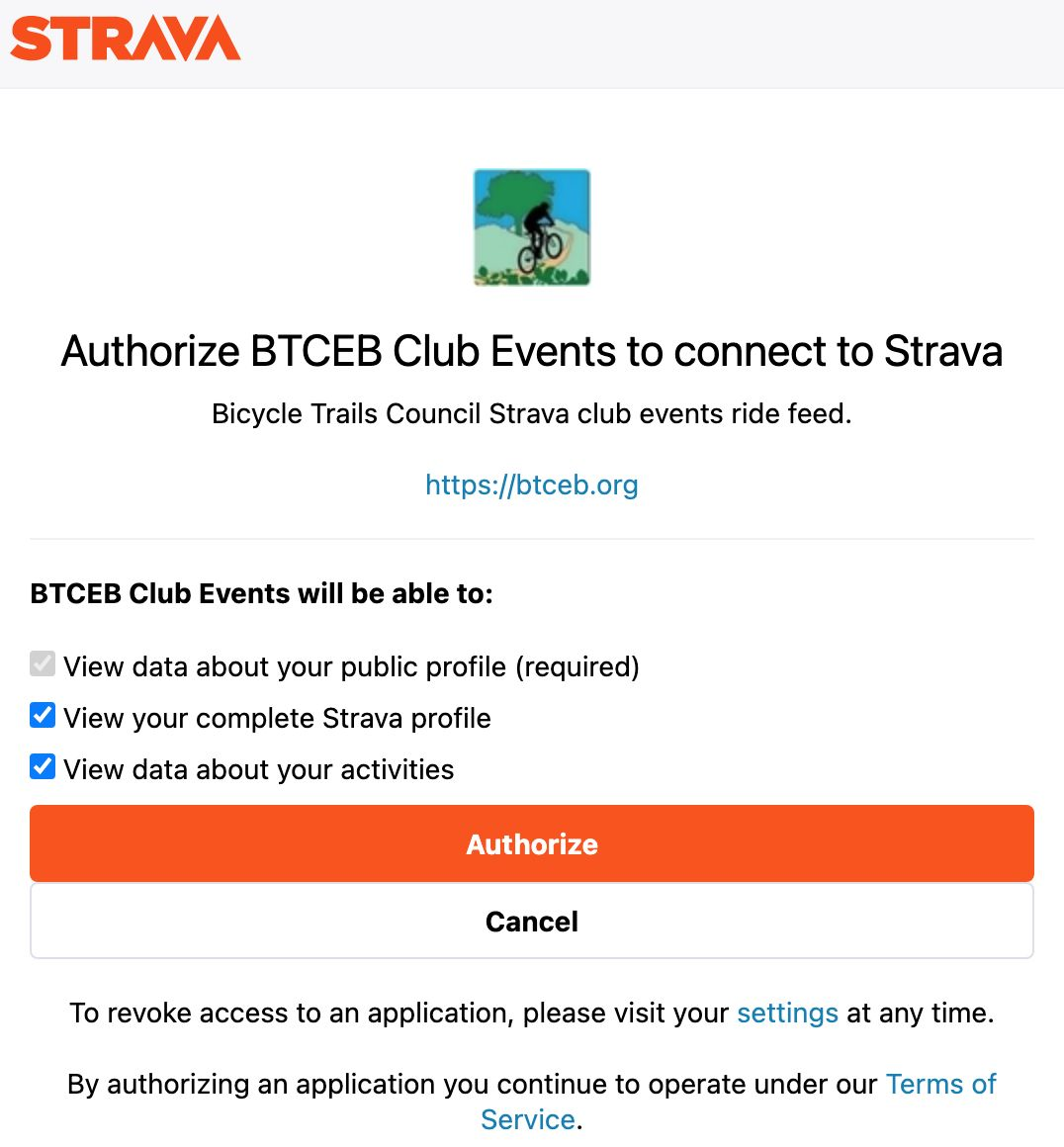
For your rides to some day appear in our club leaderboards on the BTCEB website you will need to provide authorization (aka opt-in) for the BTCEB Strava Club to collect data on your rides. By joining the BTCEB Strava club any other member of the Strava club will be able to see your logged activities. By opting-in to BTCEB collecting your rides activities we will be able to also publish them individually or in aggregate on our website or in social media posts. BTCEB will not use your ride activity days for any other purpose.
Even if you don't want to participate in any of the social media aspects of the Virtual Gala Ride we encourage you to get out and ride any!
Full ride details can be found on the BTCEB website.
Walnut Creek Open Space Adopts Trail Committee Recommendations
by Scott Bartlebaugh 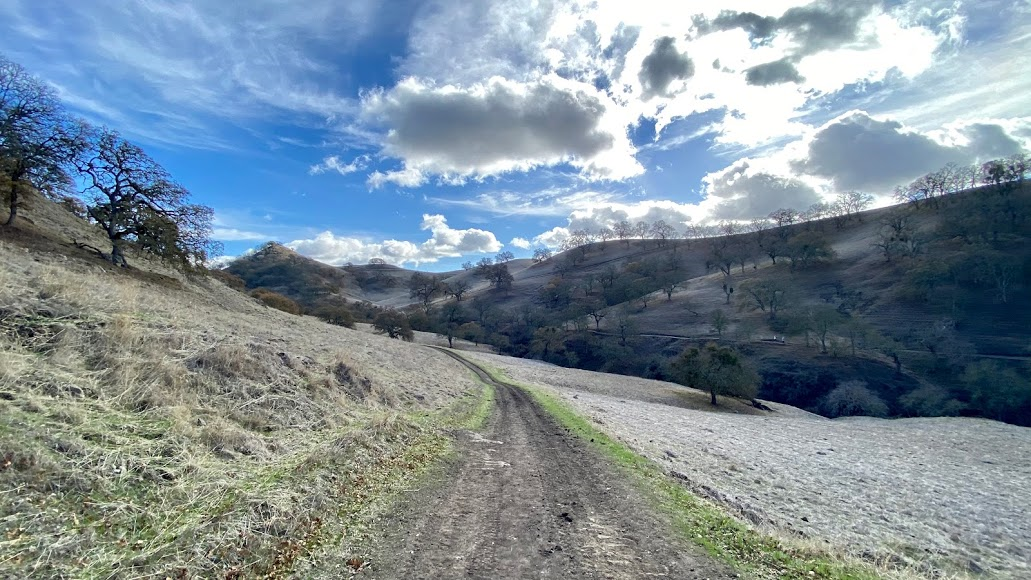
Photo by Victor Matskiv
The Walnut Creek Parks Recreation and Open Space (PROS) Commission voted 5-0 to accept recommendations 1-5 of the Trail Committee report. Recommendation 6 on enforcement was withheld for further development and was targeted to be ready for PROS discussion in February. Huge kudos to BTCEB members Barry Mendelson and Caedmon Bear for their multi-year work on this effort.
The following recommendations were adopted:
- Prioritize and close unauthorized social trails/areas and start restoration practices.
- Actively monitor and inform public through contact and signage
- Evaluate all Open Space single track trails using the Walnut Creek Trail Evaluation Criteria Checklist and make recommendations on any changes to trail designations
- Explore possibility of new multi-use flow trails in Lime Ridge to redistribute use away from areas where current rate of use is unsustainable
- Continue and encourage community engagement through volunteer events and activities
- Facilitate formation of Trail Advocacy Group/Volunteer Patrol
While this will result in the closure of some unauthorized social trails that are unsustainable or in sensitive habitat it provides a means to evaluate social trails and adopt sections that are sustainable and suitable and includes support to move forward on a flow trail in the southern section of Lime Ridge. Approximately 50 public comments were received either by email or during the meeting and the majority were in support of more bike access. Thanks to all that submitted public comments.
BTCEB Membership Drive
by Mike Udkow While membership on our Meetup site continues to grow to over 4,000 followers, membership in the BTCEB, your mountain biking organization, has been lagging comparatively.
To grow, to survive, and to represent the mountain biking community, we need your support. Your membership dues support our Gala rides and our RLaG program, pays for our insurance, helps to support NorCal High School MTBing and supports trail work at China Camp, Rockville, Fernandez and Crockett. We are hard at work developing the JMP Pump Track. Our Board of Directors meets bi-monthly to discuss all topics relevant to local mountain biking.
Membership levels start at $30, with a $15 student/hardship level. Lifetime membership is $500.
Aside from the dues, we truly need and value your membership.
Please join or renew today at www.btceb.orgSee you on the trails! BTCEB via on Social Media
**************************************************************************************************
From the Dusty Trail . . .
Thoughts on Busy Joaquin Miller Park
by Mike Udkow
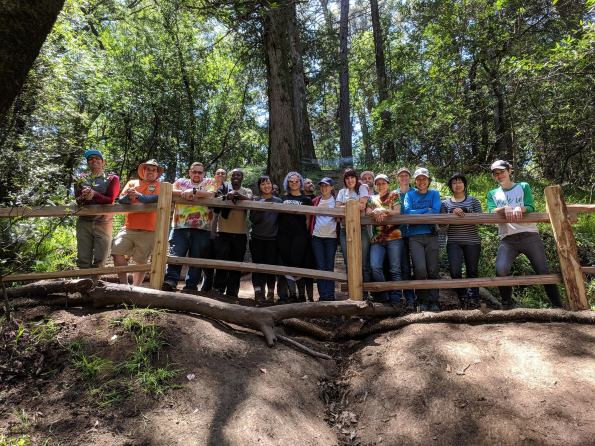
Joaquin Miller Park has seen a dramatic increase in bikers, much to the displeasure of a small but vocal coalition of anti-bikers. They feel the park is overrun with bikers. Yes, there also are many more hikers and bikers in the park. In my mind it is great to see so many bikers and hikers enjoying the beauty of JMP, especially with no physical education, no recess and no team sports breaking up the daily Zoom monotony for these youngsters.
How can the biking community respond to the anti-bikers, some who have legitimate concerns? The solution is obvious: always ride in control and at a reasonable pace, especially on busy trails like Sequoia Bayview and Sunset. Call out and ring your bell when approaching hikers. I ride with a Timber Bell which is perfect in JMP with its many blind turns. Maybe less obvious for some: don’t ride off trail, don’t cut switchbacks, don’t ride up the trail dirt sidewalls and keep off the social (ahem illegal) trails.
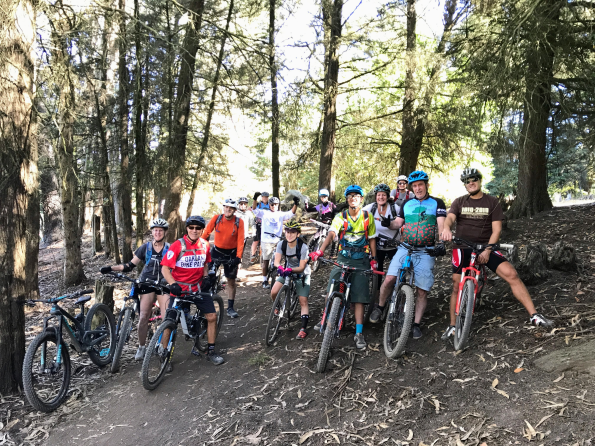
Cinderella and Chaparral have their own challenges with blind turns and hikers hiking up and bikers blasting down. When riding always think that at the next blind turn that there might be a hiker (or even a biker) there. Be prepared to stop if necessary.
As a member BTCEB you are in turn a supporter of both Friends of Joaquin Miller Park and Friends of Sausal Creek. To that end when the Covid surge abates now that the trails have gotten some moisture, BTCEB will resume our trail maintenance activities. But we can only do it with your help and support. We will post trail workdays on our Meetup site when the time comes. Please plan to join us!
A Perspective on Advocacy
by Scott Bartlebaugh Here's some food for thought on the advocacy front. We're all advocates and each interaction with other trail users has an impact. Sometimes those are positive and sometimes not so positive. While we enjoy the experience of riding a bike on a trail, bikes and trails are a means for us to get out in natural spaces and experience scenic vistas, wildlife, and solitude just as the rest of the spectrum of trail users do. We're not always seen that way.The Constant Gardener is a timely reminder to turn our passions into action.
To Improve Trail Sustainability, Be Kind to “Switchie”
by John Roberts
Switchback: “A reverse in direction of the trail grade with a level landing that is used to change elevation on a steep slope and that usually involves special treatment of approaches, barriers, and drainages.” --US Forest Service, Trails Management Handbook.
Think of a switchback as a necessary zigzag delicately built on a steep mountainside. The switchback, known as “Switchie”, magically allows riders to ratchet up the slope via less grade or steepness. For a trail to require such magic, it must be on a steep hill and have no other trail alternatives. Switchie is thereby the trail builder’s last hope! It beats the alternative of cluttered ruts or no trail at all. That is why we should treat all switchbacks with the stature they deserve.
Please educate others on “going long” around Switchie. When I teach riding switchbacks to my children, or new riders, I say “go long”. I reinforce the notion with different phrases. I might say “go wide when entering.” That is to say, turn as much as possible in the opposite direction to pick the widest line. This is the line with the flattest and easiest slope. Or I'll say, “use all of the real estate,” meaning use the outer perimeter of the turn. For example, if the hairpin turn goes left, steer as far right as you can before entering the left turn. It is “reverse psychology” alright. The trail is easy before the switchback, and only gets hard upon progressing through the turn.

The park users that shortcut switchbacks are likely not trail volunteers. This entering of the “No Ride Zone” in the picture above is the opposite of “going long”. It damages the turn. It also forms a breach for rainwater to plunge down a steeper grade. Consequently, the reckless action then forces much work for the volunteers that are willing to later fix the wrecked switchback. A US Forest Service-poster below asks riders to stay on the trail by going long around the forked tree. Conversely, shortcutting would be the equivalent of one rider heading directly towards the other rider (notice how the slope is steeper this way). Cutting a switchback also impedes vegetation from growing and serving as erosion control. The problem is compounded when BTCEB-placed logs cordoning switchbacks are taken down repeatedly by Switchie saboteurs. These egregious actions are particularly notorious at the bottom of the Cinderella Trail in Joaquin Miller Park.
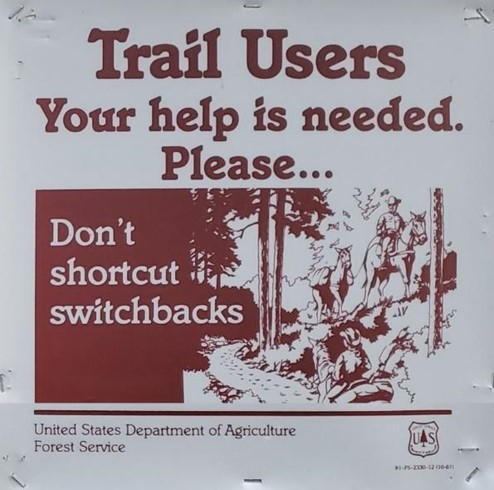
Surface rainwater is the enemy of trails. It can puddle on flatter trails. Rainwater can also flow along steep trails like a “burst dam” and create a trench by streaming away dirt. Such erosion leaves behind rocks and ruts. Both puddles, and water flow, can contribute to the “elevated root” phenomenon. Although trees favor growing roots underground, root-surrounding dirt under a trail can be splashed or washed away. These roots after time then seem to float above the trail. It is only an illusion after the roots have been slowly uncovered. Although trail builders think of mitigating these risk factors when designing trails, their design is challenged through heavy park use and betrayed through trail misuse.
Switchbacks are delicately placed where erosion is at a heightened risk. Ignorant park users may think cutting a switchback can cut an infinitesimal amount of time, or maybe pass a slower or stopped hiker. The reality is that nothing can be more unnecessary, or disingenuous. The action is contemptuous to the trail designer, as well as those who fought to keep the trail open. Cutting switchbacks invites surface rainwater to adversely affect trails by removing soil, thereby leaving only rocks, elevated roots, and ruts. This can put the viability of the trail itself in jeopardy.
Taking the long way around a switchback shows discipline, provides flow, and allows trail sustainability as the original designers envisioned. Going the long way around the switchback is also easier. It keeps the trail path tight with the least amount of grade so that rainwater damage is minimized. Bicycle riders have a limited amount of multi-use trails in the East Bay. We all share the singletrack with many park user types, both human and not. So please, spread the word that it pays to be kind to Switchie.
On the Radar
by Scott Bartlebaugh
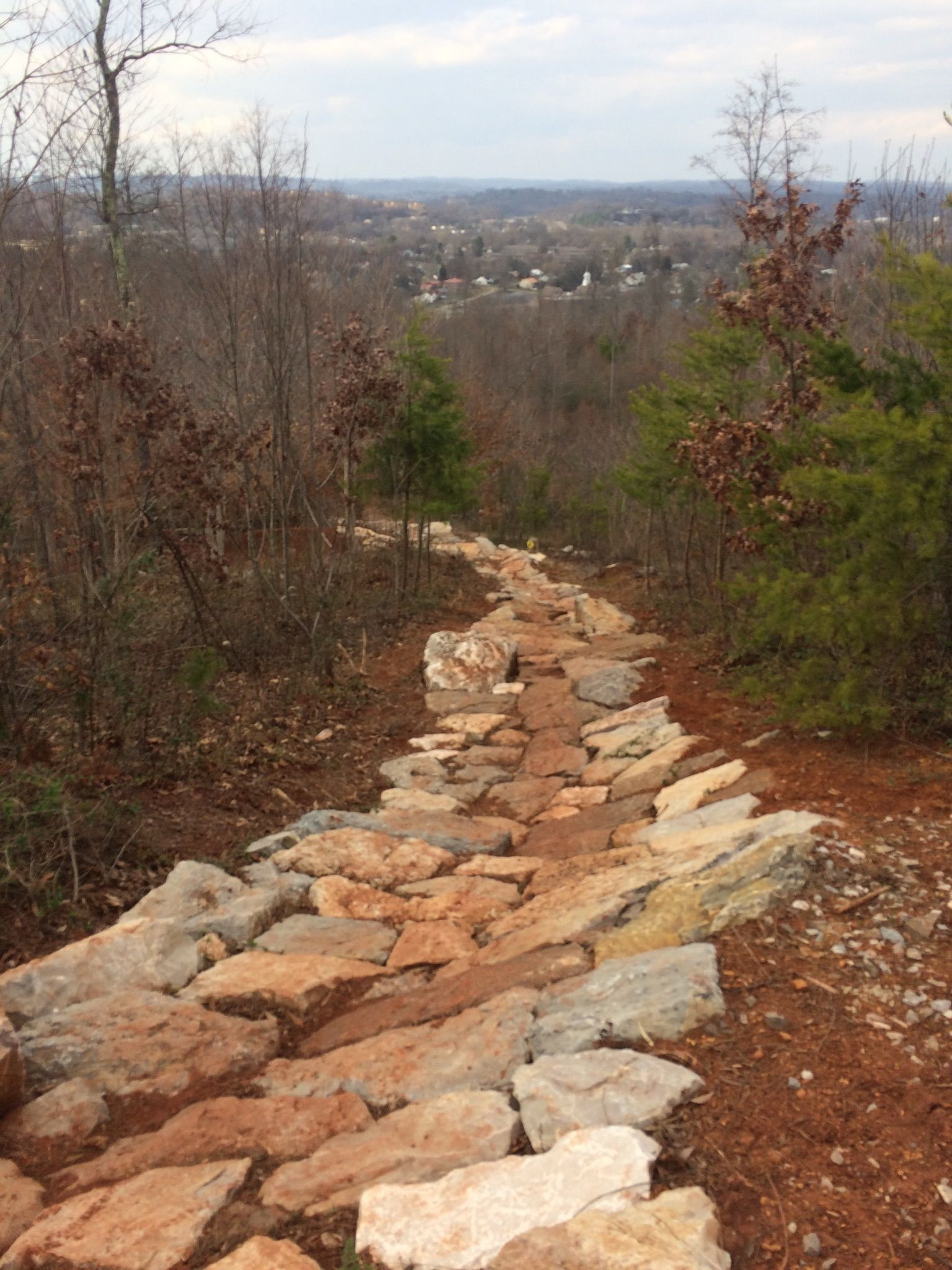 Glorious rock garden somewhere in Knoxsville.
So that 2020 epic MTB road trip with stops in Bentonville, Brevard, and Knoxville didn't happen and it's unlikely for me in 2021 either, but it will happen *some* year. A much shorter trip to trails outside Las Vegas, another stop at Hurricane Cliffs & Gooseberry Mesa and Thunder Mountain (Utah) and Pagosa Springs (Colorado) did happen.
Knoxville ???? Here's a video of somebody else's trip to Knoxville. If you didn't know the Knoxville area has about 50 miles of bike legal single track and looks like it's definitely worth a stop if you're nearby.
Happy New Year everyone!
Bike-packing: What Is It? Is it Right for Me?
by Tom Gandesbery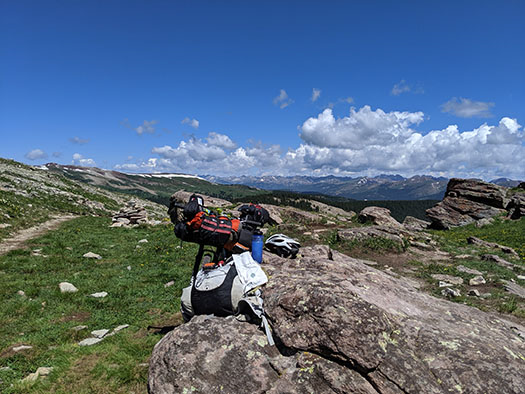 Are you dreaming about a summer adventure? Maybe even starting to plan one? Then maybe just maybe bike-packing is in your post-COVID future!
Do you long to spend quite time in the great outdoors? Do you want to travel to distant places and explore other cultures at a speed that is slow enough to move with the butterflies but not so fast as to smash them to smithereens? Do you have days to weeks to spend visiting places of breathtaking beauty while forgoing many of the comforts of a Hilton, a Marriot or a Sandals Resort? (once referred to as “roughing it”) And here is the obvious question: do you want to do that while on your bike? If yes, then you should consider Bikepacking!
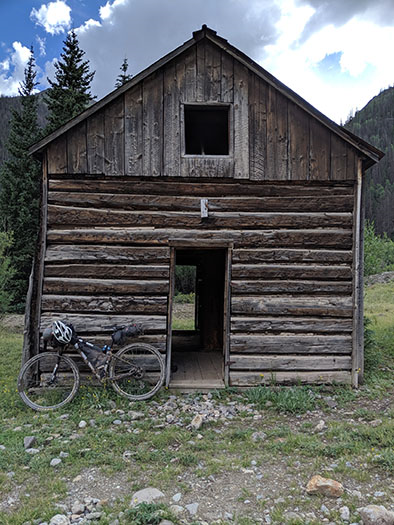
Before getting too far into this topic, let me say that this is just a short introduction and rather than try to explain all the facets and intricacies of the pastime / sport / obsession I will just point you to a few excellent resources from which you can do your own research and come to your own conclusions. These various websites and zines are where I have picked up tips and inspiration. (Some links below)
What is it?
So, to define our terms, “bike-packing” is just backpacking on your bike. Simple as that. Is it “new”? Well sort of but not really. Arguably folks have been bikepacking since The Wheel was perfected . . .
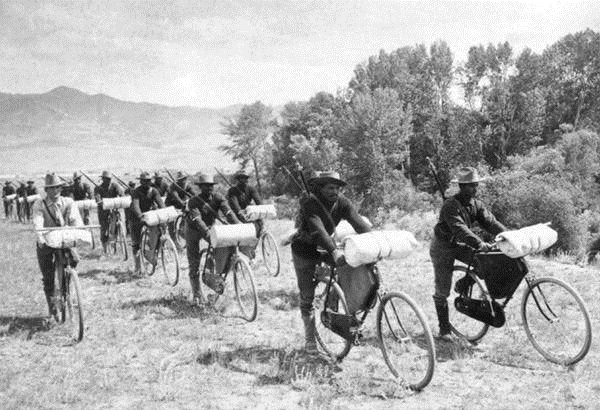
And like bike “touring” the rider is self-supported; nobody is carrying your stuff. But related there are many small touring companies that offer to do just that as you ride out each day (see Easing Into It, below).
But how may you ask is it different from regular bike touring? Not very and very much, depending on context. For example, many ‘bikepacking’ trips take place over fairly smooth gravel roads, where a traditional and experienced bike tourist using wider tires might not hesitate to tread. On the other hand, there are well established bikepacking routes like the Arizona Trail (AZT for short) that demand a serious mountain bike (favoring full-suspension) and bike packing gear (not to mention attitude!). A traditional bike tourist would take one look at the AZT and turn around for the comfort of state highways (Ah, crumbling shoulders, broken glass and 18-wheelers). But in most cases, like many of life’s pursuits, bikepacking is a study in compromises: performance vs. reliability. Comfort vs. weight. And not surprising, bikepacking has it’s sub-genre, its spin-offs: fat-bike beach touring, fat-bike snow camping, inflatable raft touring, fly fishing. Imagination is the limit.
If you have done any backpacking, you might ask how is bikepacking different from that? Why not just sling your gear over your shoulder and leave the bike behind? Well for one you will never get those horribly sore hips and shoulders after three days out, since nearly all your gear is on your bike. And depending on your route, you may actually get away with carrying less food and other materials, as you may end up covering anywhere from two to ten times the distance you can cover on foot. That can make resupply points more frequent. So camp for a few days, dash into town for burgers and a warm bed and then head back into the woods for more camping. On the other hand, you will be shutout of riding in our nation’s Wilderness Areas and on trails in National Parks where wheeled machines are not allowed. So don’t toss your backpack quite yet. And in Canada and other countries, the rules are of course very different. But it seems globally the wild country open to bicycle access is limitless.
When first thinking about this new pursuit, it is natural to focus on the bike: what sort is the best? Is my bike going to work? And jeepers, is this an excuse to get a new bike?! Sorry but consensus amongst the bike-packing experts seems to be that “the best bike is the one you have”. In other words, a good mountain bike in good condition is all you need. Not to say that some bikes will work better suited to the type of riding you might expect on a given route. One reason being that when fully loaded your machine should be maneuverable, but it won’t have that liveliness of an unloaded bike. And you won’t likely be pushing yourself to the limit of your technical abilities. An obvious solution can sometimes be had when you make camp, strip the bags off and go shred that perfect single track. Then, after a suitable respite, resume more slog-ish tour.
But what is specific to bikepacking is your luggage. The bags, which you strap, lash and buckle to your bike become the focal point of trip planning, organizing, and obsessing. The challenge is to see what can be fitted where, all the while keeping the center of mass narrow and low. That in a nutshell was the difference between traditional bike touring and bike packing. A touring bike was a 700cm road bike built like a brick house with sturdy racks, maybe fenders and built-in lights, was designed to carry touring bags, called “panniers” (since I guess us Americans could not think of a better description in English), both front and back. With a bazillion cubic inches of capacity, there was nothing keeping one from bringing any and all items that “might come in handy”. Hence, the 100-pound touring rig. (And the BOB trailer – which is 15 pounds empty). Contrast that to the typical bikepacking rig which is a hard-tail mountain bike fitted with a large seat bag, frame bag and some sort duffle bag slung from the handlebars.  There are many variations on the theme, and many arguments going every which way on things like: hydro-packs – love them or hate them?, minimalistic metal racks to keep the bags steady, even wire baskets hanging out front. Yes, the luggage is where folks get very creative and opiniated. There are many variations on the theme, and many arguments going every which way on things like: hydro-packs – love them or hate them?, minimalistic metal racks to keep the bags steady, even wire baskets hanging out front. Yes, the luggage is where folks get very creative and opiniated.
A Very Short History:
It was the late 1980s when a couple of intrepid young adventures set out to ride the Continental Divide (Mexico to Canada) on their new-fangled mountain bikes. They found out that lighter is better (And you will too!). In 1998 the Adventure Cycling Association published maps of a route (see link below) which became popular with those traveling both by bicycle and off-road motorcycle. This thing also grew out of that crazy race up in Alaska called the Iditarod, a dog sled race, that spawned races on same route using touring skies, mountain bikes and then, in the snow, fat bikes. And that lead to some innovative ways to carry gear on a mountain bike by a small Alaskan bag company called Revelate (which I think sounds funny because it sounds like “re-evaluate). Which lead to the bikepacking bags, as we know them today. Once a fairly niche product, you can now buy them from the major makers and REI. And you know something has gone ‘mainstream’ when it’s featured at your local REI! So, the endurance racers can be credited for innovating much of the gear and the approach to using it, not to mention inspiring many thousands of ‘regular folk’ (like me) to take up the sport. 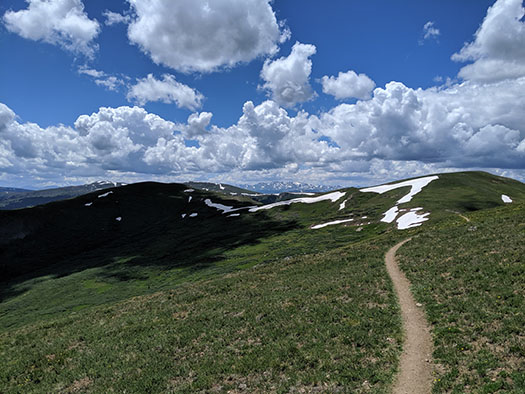
Where to Go?
Bikepacking around the bay area is possible with a few campgrounds located within riding distance. However, most bike packing adventures lean heavily on what is called “dispersed camping” that is pitching your camp just off the trail for the night and leaving no trace the next morning. This is mostly allowed and even encouraged in our national forests and BLM lands but is verboten on our regional parks and open spaces. And on private lands, you best talk to the owner first before throwing down your gear and kicking up your feet. Because much of the Sierra high country is designated Wilderness, the majority of bike packing in California seems to happen in the lower elevation northern Sierra / Cascades and the south eastern parts of the state. There are some newly established routes in Oregon that start just north of the border at Klamath Lake and take you to the far end of the state. You could easily burn two weeks exploring all the trails and dirt roads of the Oregon Cascades (see Resources below). And the Canadian Rockies down to Mexico? That would fill a few books.
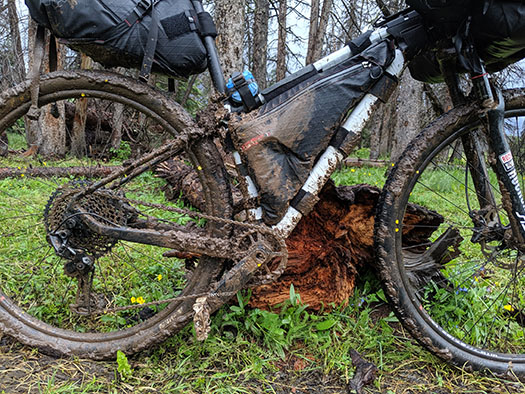 Easing into It:
While outside the scope of this article there are ways to ride your bike all day and not have to lug all the [sometimes heavy] camping gear and do all the [often stressful] logistical planning. There is a myriad of small touring companies that do everything from just meet you at the end of the day with your camping gear, to arrange a comfy hut with hot food, cold beer, and showers. And there are also some established hut-to-hut routes in the southwestern region, maybe elsewhere too. (Let Google be your guide!) Some folks do their own supported tour and do a vehicle shuttle, taking turns driving one day while the others ride. Maybe all this can be covered in future issue of the Buzz . . .
Some Bikepacking Resources
Adventure Cycling Association: These are the folks who started it all. Formed from the 1976 “Bike Centennial” the focus was for many years was on cross country touring but as excellent paper maps of a few major routes, is getting it together on digital resources, and also has a ton of supported rides. ACA published the first maps of the “Great Divide Mountain Bike Route” which is now very popular, is raced and utilized by thousands of cyclists and motorcyclists each year. https://www.adventurecycling.org/
Bikepacking dot net: Crowd-sourced = no advertisement, less focus on gear and many, many stories. http://www.bikepacking.net/bikepacking-routes/
Bikepacking Roots: A newish nonprofit with impressive leadership, they are building new routes in the Rockies and southwest to augment what Adventure Cycling Assoc. started with the Great Divide route way back when. https://www.bikepackingroots.org/
Bikepacking.com: As the name implies, a commercial site but one with great stories, route ideas and inspiring photos. Much on south America and Asia. https://bikepacking.com/
The Radavist: This is the glossy fashion mag of cycling. Great photos of quirky bikes and hand-made approaches to gear. Not much bike packing content but some of the articles can be inspiring. (For the record I’m far older than the target demographic, don’t have a beard and own only one flannel shirt) https://theradavist.com/
Adventure Journal: More Eye Candy. Cycling is just a small part of what they cover in this magazine, which is amazing stories of heroic (or stupid you be the judge) endeavors in extreme places. An online zine and a print journal which I thought had gone out of business but apparently not. https://www.adventure-journal.com/category/all-things-bike/
Some Route Specific Resources
Colorado Trail Association: Amazing non-profit that created and maintains the Colorado Trail (which is also the Continental Divide Hiking Trail in CO). Publishes a fantastic guidebook for the trail as well as organizes thousands of volunteers who maintain segments of the trail. https://coloradotrail.org/
Oregon Timber Trail: Newer effort now with apparent challenges of wildfire impacts. Can we ride much this route now? On my short list: https://oregontimbertrail.org/
Oregon Bike Packing: BTW These new routes help tourism in some very remote towns. http://www.oregonbikepacking.com/
Arizona Trail: https://aztrail.org/explore/mountain-bikers/
And about those first bike-packers
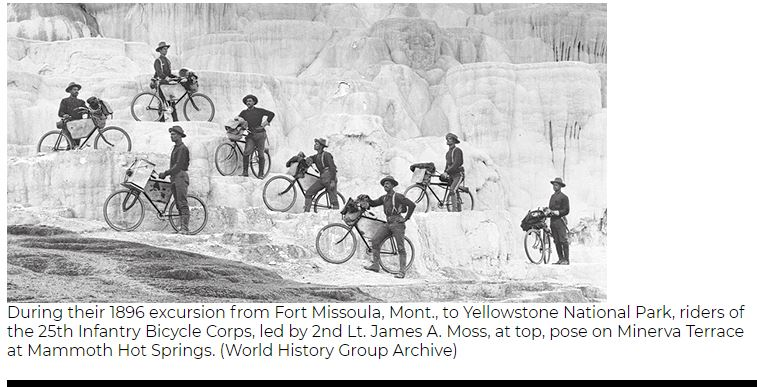
https://www.historynet.com/the-buffalo-soldiers-who-rode-bikes.htm ------
Reminder: As a BTCEB member, you can receive a 10 percent or higher discount for parts at many of the bike shops in the East Bay. You just have to ask. Thank you to the many bike shop sponsors for your support!
****************************************************************************************** |
|
|
|
|
|
ABOUT BTCEB
BTCEB is a one-stop shop. We defend access rights. We lead volunteers to build sustainable trails and repair historic trails. We host social rides. We teach underprivileged kids to ride. We fund youth mountain bike race teams. The list goes on because as riders we can do more together than individually. If you have not already, please consider joining us as a member. Many bike shops in the East Bay grant a 10% discount on bike parts to BTCEB Membership Card holders. It is just another benefit of joining BTCEB. Thank you to all the East Bay bike shops that support our efforts both on and off the trails!
CONTACT US
Do you have a good ride story, trailwork report, or other bike trail news? Tell us about it. Please send a paragraph with 150 words or less with a pic (under 10MB please) and/or link telling us about trailwork, rides, events, or any good mountain bike effort to bring our community together, etc. Please send via email to our editor Jamuel Starkey (with pictures if possible) at: buzz@btceb.org
BTCEB BOARD MEMBERS Jerott King, Presidentinfo@btceb.orgYvette Skinner (acting), Membership Directormembership@btceb.org(Vacant), Vice President
Tom Holub, Secretary
Alan Enrici, Treasurer
Austin McInerny, Advocacy Directoradvocacy@btceb.orgBen Brunetti, Trails Directortrails@btceb.orgJosh Church, Education and Promotion Director
Jamuel Starkey, Communications DirectorTom Gandesbery, Director-at-Large
Scott Bartlebaugh, Director-at-Large |
|
|
|
|
|
|
|